Shochu is the most recent Japanese spirit export. But this mid-ABV distilled spirit is not a new creation. Shochu dates back hundreds of years and is the most popular alcoholic drink in Japan. In the rest of the world, Shochu just started to gain traction.
In our test, these were the best Japanese Shochu you should definitely try.
Summary of Best Shochu to drink in 2024
- Best Mugi Shochu: Iichiko
- Best Imo Shochu: Kuro Kirishima
- Best Kome Shochu: Ginka Torikai
- Best Awamori Shochu: Kumejima Kumesen
Time to learn more about the different Shochu options available. So, here comes our list of the best Shochu, which you should definitely give a try.
The 8 Best Shochu to Drink in 2024

1. Iichiko

- Type: Mugi (made of barley)
- ABV: 25% (regular version)
- Classification: Standard
- Taste: mild and clean
For somebody new to Shochu, Iichiko is the perfect bottle to start the journey. It's based on barley and is often served in Japanese restaurants.
Due to its low price point and excellent quality, it also is the most popular and best-selling Shochu in Japan. There are many different variations of Iichiko available, with the bestseller coming in a carton container (only in Japan).
In other countries, including the US, Iichiko typically sells more refined versions like Iichiko Saiten. These also contain a higher amount of alcohol. Iichiko Saiten, for example, is bottled at 43% ABV.
2. Jinkoo
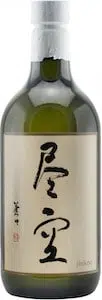
- Type: Imo (made of sweet potato)
- ABV: 25%
- Classification: standard
- Taste: Savory, earthy, and herbal
Jinko is a delicious Shochu made from sweet potatoes from the Kagoshima prefecture. Jinkoo translates to "perfect sky" and has an approachable and mild flavor profile.
The taste is sweet and buttery with savory and earthy notes. Compared to other Shochus made from sweet potato, the taste is more restrained, making it another sublime choice for people new to this spirit.
The mild taste and relatively low level of alcohol make it a popular Shochu for sipping. In a mixed drink, the flavors and aromas o Jinkoo might get lost.
3. Kurokirishima
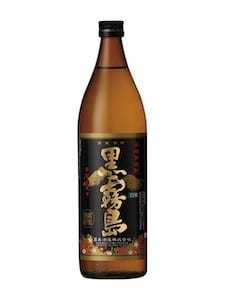
- Type: Imo (made of sweet potato)
- ABV: 25%
- Classification: standard
- Taste: sweet and tart
Kurokirishima is somewhat the standard bottle when it comes to sweet potato Shochu. It is almost as common as Iichiko and won several awards at national and international spirit contests.
This Shochu is developed and crafted to go along with food. And that's just one of the reasons why you'll often find this Shochu in Izakaya-style restaurants.
4. Mitake

- Type: Imo (made from sweet potato)
- ABV: 25
- Classification: standard
- Taste: mild and sweet with notes of sweet potato
This Shochu is produced on Yakushima island, a world heritage site. This place is known for its unique ecosystem, nature, and climate conditions.
The very high amount of rainfall throughout the whole year leads to an abundance of fresh and pure groundwater. And this water is used to make this small-batch Shochu.
Mitake Shochu is available in limited batches only. That makes it hard to buy at some times. If you can buy it though, you won't be disappointed.
Mix a glass of Mitake with warm water to unfold its full aroma and flavor. It's a delicious and slightly sweet Shochu with complex flavors.
5. Ginka Torikai
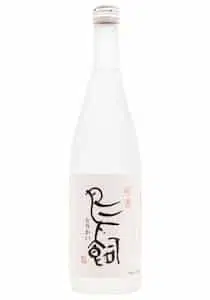
- Type: Kome (made from rice)
- ABV: 25%
- Classification: standard
- Taste: mild taste with sweet and fruity notes
Shochu made from barley or sweet potato accounts for the lion's share of Shochu sold in Japan. But as I mentioned before, there are plenty of other types available. One of them is Kome - a Shochu made from rice.
Of all rice Shochu, Ginka Torikai is probably the most famous one. The distillery producing the brand focuses on only this one product. -A rarity in today's spirit business where most distilleries try to diversify.
The taste is very fruity and also sweet, comparable to Sake. A great option if you prefer more fruity notes in your spirits and a great sipping Shochu.
6. Maou

- Type: Imo (made from sweet potato)
- ABV: 25
- Classification: premium
- Taste: mellow and fruity
Among premium Shochu, Maou is one of the most popular products. It's a Honkaku-style Shochu produced in a distillery more than 100 years old.
In the 2000s, there was a tremendous Shochu boom in Japan. Since then, Maou has been one of the most desired Shochu brands.
Maou Shochu is aged and has a wonderfully mellow and slightly fruity taste. If you fancy Shochu and can get your hands on a bottle, buy it. It's hard to get and sometimes sells online for triple the original price. So make sure to give it a try if you have the chance to do so.
7. Akakirishima
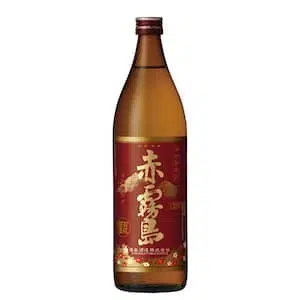
- Type: Imo (made from sweet potato)
- ABV: 25
- Classification: premium
- Taste: mellow and sweet
This Shochu is another premium bottle. Akakirishima Shochu is made from one specific type of sweet potato, which leads to a limited production volume.
Typically this Shochu is only available in spring and fall. Once sold out, you have to wait for half a year for the next batch to arrive in the stores.
That fact had been quite an issue for some time. Hence, the brand has meanwhile responded by increasing production volumes.
8. Kumejima Kumesen
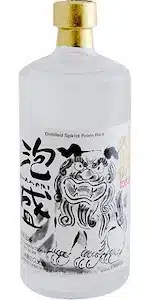
- Type: Awamori (coming from Okinawa)
- ABV: 24%
- Classification: premium
- Taste: earthy, sweet, banana
Finally, an Awamori Shochu. This type comes from Okinawa and typically has quite an interesting flavor profile. And this also applies to this specific bottle.
Kumejima Kumesen is definitely not for beginners. Its taste is complex and quite extraordinary.
It has an earthy taste with herbal, fungal, and subtle sweet notes. You can also find hints of bananas. And yes, it tastes as complex as it sounds.
The main reason for the exciting flavor profile is the unique climate of Okinawa. It offers perfect conditions for the black koji mold to develop unique flavors.
The perfect way to enjoy this Shochu is on the rocks. That way, you can fully indulge in the savory umami flavors.
What is Shochu?
Shochu is a distilled spirit from Japan that comes in many varieties. There are two different distillation methods and many different possible bases.
Most commonly, ingredients like sweet potato, buckwheat, rice, barley, and wheat are used to produce Shochu. The ABV typically ranges between 25% and 35%, but there are some exceptions that clock in at 40% or more.
In Japan, this alcoholic beverage is a star. However, in other parts of the world, it is hardly known. Luckily, lately, more and more brands have decided to promote Shochu outside Japan.
The different types of Shochu
All Shochu types available on the market can be classified into two different categories: Kourui Shochu and Otsurui Shochu. The latter is also known as Honkaku Shochu and uses more traditional methods for the distillation process.
Honkaku Shochu gets distilled only once, whereas Kourui Shochu is distilled multiple times to remove impurities in the spirit.
As Shochu can be made of many different ingredients, the variety within each category is enormous.
There are many different subtypes available like Imo-Jochu (sweet potato), Mugi-jochu (Barley Shochu), Kome-jochu (Rice Shochu), Kokuto Shochu (brown sugar Shochu), Soba-jochu (buckwheat Shochu), and Awamori (Shochu from Okinawa).
The secret ingredient Koji
Koji is a type of mold used in Shochu production. Koji adds savory umami flavor to spirits and food. It can not only be found in alcoholic ingredients like Sake and Shochu but also in things like miso, mirin, and soy sauce.
Koji also helps to initiate the fermentation process once added to the base ingredients of Shochu (barley, sweet potato, etc.). The mold contains enzymes that help transform starch and protein into amino acids and sugar.
The result is the flavor that is best known as umami. And that's the secret of the famous umami taste in Shochu.
How to drink Shochu
Shochu can be enjoyed in many different ways. From neat to mixed with warm or cold water to cocktails. Below are the most common ways to drink Shochu:
- Neat or on the rocks
- Mizuwari: mixed with cold water
- Oyuwari: mixed with warm water
- Cocktails (like the famous Chuhai, or Chu-hai, cocktail)
What is Premium Shochu?
As with most other spirits, there are more affordable everyday Shochu bottles and some more expensive ones. The pricier bottles are also often called Premium Shochu.
Traditionally, these premium Shochus are intended for gifting and not seen as a spirit you should drink every day. In these recommendations, I also categorize each bottle into premium and standard.
The classification, though, is based on the prices in Japan. The difference in price can vary when sold in other countries of the world.
Which Shochu to pick?
If you're new to Shochu, start with a mild version, then slowly try more intensely flavored Shochus. In the beginning, Iichiko and Jinkoo are great options. Both are mild in taste and are of good quality.
The higher proof Iichiko Saiten is also a wonderful Shochu for cocktails.
If you're looking for something new and exciting, I recommend trying Kumejima Kumesen or Akakirishima.
What should I look for when buying Shochu?
When it comes to Shochu, there are three things you should consider. These three things are:
- Category: Honkaku or Kourui Shochu
- Base ingredient
- ABV
The first thing is the category, is it a traditional Honkaku (Otsurui) Shochu or a Kourui Shochu.
Honkaku tend to have more character and aroma because they are single-distilled. Kourui Shochu gets distilled multiple times to remove impurities. Therefore, this version is a bit less complex and flavorful.
The second thing is the base ingredient. The most common are barley and sweet potato.
Each ingredient shines through and creates a distinct taste in the final result. So be mindful when choosing your Shochu.
The last thing is ABV. As the range is wide, you can find Shochu from 20% to 45% ABV. Naturally, sipping a spirit of 45% is different from one that clocks in at 25%. So make sure that the Shochu you choose matches your intentions.
If you want to make cocktails with it, choose high-proof versions. If you intend to sip it neat, opt for a lower-ABV Shochu.

